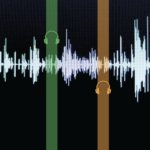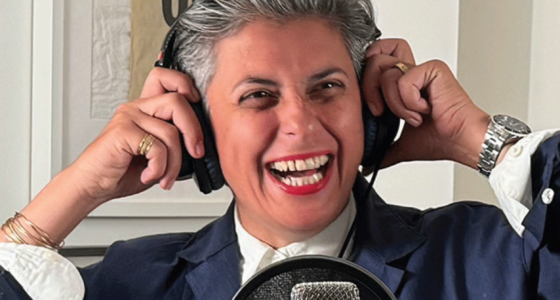The struggles and triumphs of journalists who live with ADHD
It took all of 15 minutes for Edmonton-based freelance journalist Omar Mouallem to be diagnosed with Attention Deficit Hyperactivity Disorder (ADHD). Mouallem’s psychiatrist described him as a “textbook case” after he answered yes to a list of questions that included “Do you frequently get speeding tickets?” and “Do you forget objects when you leave home?”
Until a few years ago, Mouallem, a National Magazine Award-winning journalist who has written for publications such as The Ringer and Rolling Stone, was able to mitigate the most exigent symptoms of the condition on his own. But as he began to take on longer projects, like his upcoming book Praying to the West, his day-to-day tasks proved increasingly challenging. “When I started to write books, that’s when my work started to require a great deal of focus,” says Mouallem. “It required me to sit my ass down, and read a lot.”
He had sensed for quite some time that he had ADHD. But when he transitioned to authoring books, he knew he needed to seek a diagnosis. He compares his freelance magazine assignments to running five sprints simultaneously. Writing books, he says, is like a marathon.
People with ADHD often over-focus, under-focus, hyperfocus, have difficulty switching focus, or have difficulty prioritizing their focus. They are often drawn to the “shiny object,” or to the task they find interesting, but not the thing that is most important. In work or school settings, when people with ADHD must complete tasks they find boring or mundane, their ability to pay attention decreases. For journalists with ADHD, tasks that require sustained attention, such as copy editing, transcribing, scouring long documents, or tedious administrative elements of the job, can be particularly difficult.
ADHD is a neurodevelopmental disorder caused by underactivity of dopamine in the frontal lobe of the brain. Because the frontal lobe is the part of the brain responsible for executive functions, such as flexible thinking and working memory, those living with ADHD often find themselves having trouble paying attention or starting tasks. They might also make impulsive decisions. For journalists, this can mean missing deadlines due to procrastination, poor time-management or forgetfulness. It could also mean filing unclean copy containing small errors that would have been caught with a focused proofread. Some may have a hard time getting started on their work at all, finding distractions in household tasks and other auxiliary chores even when an editor is waiting. Without medical diagnosis, many mistakenly classify these challenges as laziness or a lack of motivation. This can result in anxiety, insecurity and feelings of self doubt.
Mouallem was hesitant, at first, to be included in this story, citing negative stigma toward ADHD. He worried he would seem less hireable. “We’re not exactly known for being close readers,” he says. “We’re famously innumerate.” For journalists, especially ones who freelance, a reputation for working hard is essential. Mouallem says he would understand if editors saw a journalist’s ADHD diagnosis as a potential hazard. “It should make an editor wonder: does this guy have his facts all right? Is he reading the information correctly?” says Mouallem. Even perception of the condition can become a professional obstacle.
But the idea that all journalists with ADHD perform poorly is unfounded. In some ways, ADHD can be a strength.
Dr. Doron Almagor, a psychiatrist who works with children, youth and adults at the Possibilities Clinic in Toronto, compares the ADHD brain to a car with no steering wheel—those with the condition cannot easily change the direction of their focus. “In ADHD it’s like you’re absolutely super-on or super-off,” he says. This inability to switch gears can create a state of “hyperfocus,” in which one can zero in on a subject, completely undistracted.
“Sometimes it’s a gift,” says Mouallem. Periods of hyperfocus, he says, enable him to dive deep into research and find revelations that others may have missed. “Some of the stories I’m most proud of were written in hyperfocus tangents.” (At the beginning of the COVID-19 pandemic, Mouallem channeled his energy into organizing Pandemic University, a series of affordable online classes taught by journalists and authors.)
Approximately four percent of adults have the condition, according to the Centre for ADHD Awareness Canada (CADDAC), which means that ADHD permeates occupations in many industries. CADDAC lists 65 possible symptoms in adults, in five main categories: attention regulation, hyperactivity, impulsivity, executive functioning, and emotion regulation. ADHD can manifest in any combination of symptoms. Some lose track of their tasks and are prone to missing details. Others find themselves spending money impulsively, unable to sit still, or hypersensitive to criticism.
(According to a 2019 BBC story, childhood ADHD appears to be significantly underdiagnosed in girls. “For those whose symptoms are missed as children, living with undiagnosed ADHD as they move into adulthood causes problems,” wrote journalist Kelly Oakes. A study cited in the article, conducted by King’s College London, notes that the ratio of ADHD diagnosis among boys and girls during childhood is anywhere from 2:1 to 10:1.)
For some with ADHD, the demanding, at times chaotic, nature of a newsroom is exactly what they need to function productively. Heidi Bernhardt, founder and president of CADDAC, says the fast-paced, time-sensitive environment of newsrooms often makes those with ADHD well-suited to this sort of workplace. American journalist James Jordan understands.
Jordan remembers one of his first assignments as a sports reporter: covering a high school football game for the Ashley News Observer in Crossett, Arkansas. The day was hectic. Jordan was responsible for writing the story, finding the right opportunity to take photos, and getting a quote from the coach in time for the story to run in the paper the next day. The deadline didn’t bother Jordan. In fact, he found scrambling to get all the pieces together uniquely stimulating. “I’d never had a job like this before,” he says. “It was exciting.”
The pandemonium of the daily news cycle created conditions in which Jordan could thrive. But it wasn’t always smooth sailing. In a piece for The Writing Cooperative, a blog hosted by the online publishing platform Medium, Jordan wrote that his ADHD has been a cause of career instability. He went through 17 different journalism jobs, bouncing from state to state, before settling on a freelance career. “I just knew I was different than most people, and would not fit in certain environments,” he writes. Jordan recalls feeling like a failure, especially in the first year of his career, during which he went through three of those jobs. In various newsrooms, Jordan clashed with employers who didn’t understand the way he needed to operate. He often found himself defending his inability to sit still, or the messy state of his desk, where research material, snacks, and his notebook were always within arm’s reach. In workplace settings with rigid expectations, Jordan just couldn’t fit in.
That feeling of unbelonging, says Jordan, likely contributed to his depression. “A lot of things just seemed harder for me than they seemed for other people,” he says. “I think that was the ADHD.”
In some cases, says Almagor, ADHD can lead to other mental illnesses. Almagor says that adults with ADHD are at greater risk of depression, anxiety, and addiction, because of feelings related to inadequacy. Many who have ADHD feel like they are wasting their potential, because they are aware of their intelligence, but find it challenging to complete basic tasks.
The psychological drawbacks of ADHD are real. Fortunately, in recent years, discourse around ADHD has become more prevalent. A greater understanding of the condition amongst the general public may reduce the depression and isolation felt by those who feel out of place in a world designed for neurotypicals. The discussion around ADHD in the realm of journalism has also become less generalized. Last year, on a segment of CBC’s The Current radio show, American reporter Yashar Ali described a mental block he often feels, even with simple tasks like starting what became a viral Twitter thread about living with ADHD. “I had [the thread] in my head for three weeks,” Ali said. “It was virtually impossible for me to get it started, and it only took me 20 minutes to type out. It’s not like it was an arduous task.”
In February, Toronto-based travel journalist Christopher Mitchell shared his own unique process for managing tasks, in an episode of Faster Than Normal, hosted by Peter Shankman, author of a bestselling book about ADHD of the same name. “I’ve figured out that 10 a.m. to 2 p.m. is my sweet spot for efficient, creative work,” Mitchell said in the episode. “And then 2:30 p.m. to 5:00 p.m. is for the things I need to get done that I didn’t really want to do, and don’t need to focus for.”
Just as the symptoms of ADHD vary on a case-by-case basis, so too does the range of treatment. The most effective method is medication, like Dexedrine or Adderall. Because ADHD is a neurodevelopmental disorder, as opposed to a psychological one, prescription stimulants are effective in mitigating symptoms. For journalists, says Almagor, reporting on topics they find interesting can go a long way in easing the most burdensome elements of the condition.
Solutions can be simple and personal. “I start my day with a checklist,” says Mouallem. Creating a work environment with strategies that are personally conducive to productivity can help, too. Mouallem frequently signs out of all social media, to prevent any distractions. Sometimes, even just changing work spaces can make a difference. Pre-pandemic, when the confinements of his home office began to cause restlessness, Mouallem would pack up his things and work at a nearby cafe. But with businesses largely closed to slow the spread of COVID-19, this approach, for the time being, is not possible. “One of the biggest struggles of this pandemic for me has been adjusting to working from home for months on end without a secondary workspace,” he says.
Mouallem’s final tip is exercise. He jogs most afternoons. Exercise clears his head, he says, and helps him mentally organize the day’s tasks. It’s also when he generates new ideas—it was on a run that Mouallem came up with Pandemic University.
For Mouallem, journalism can be a sprint or a marathon. No matter the distance, he keeps running.





